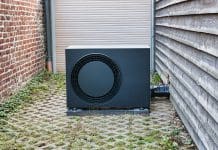Zehnder Group UK and CIBSE Journal have published a study into understanding of overheating homes, finding majority do not understand ‘Approved Document O’
Climate solutions specialists and CIBSE Journal have collaborated and published a study into understanding of overheating home regulations.
The results found that the majority of building service engineers did not fully understand UK Building Regulations Approved Document O, the document regarding overheating regulations for buildings.
Most building service engineers did not understand overheating regulations
The study found that 34% of the respondents claimed to know Document O well, with 46% saying they understood the document in theory but were unsure how to put it into practice, and 19% responded saying they had no understanding at all.
The study also ranked where respondents placed building overheating in a list of priorities, finding that it ranked quite low with design, quality, building regulations, and energy efficiency all ranking above overheating.
Overheating is a growing issue in the UK
The context of the study shows that overheating is an issue that is only getting worse in the UK.
Regulations state that if a property exceeds 26°C for extended periods of time, it can have adverse affects on occupants health, wellbeing, and productivity.
But according to the Climate Change Committee, about a fifth of homes in the UK already exceed this threshold, and worse still, if climate change continues as it is, around 9 in 10 homes will be at serious risk of overheating, should the temperature rise to 2°C above pre-industrial levels.
Jason Bennett, indoor air quality expert at Zehnder Group UK, said: “The issue of overheating isn’t going to go away; it’s only going to get worse as climate change has more of an impact, heatwaves become more frequent and we continue to create highly energy-efficient homes that are effectively turning into ‘hot boxes’.
“When we create these energy efficient homes and high-rise apartment buildings of lightweight structural materials that are notorious for solar gains and lack thermal mass as well as greenhouse levels of glass, we end up spending a lot of money trying to reduce the temperature within those properties. Whilst improved energy efficiency must continue to be a priority, the future has to be about cooling solutions to ensure comfort and improved health for building occupants.”














